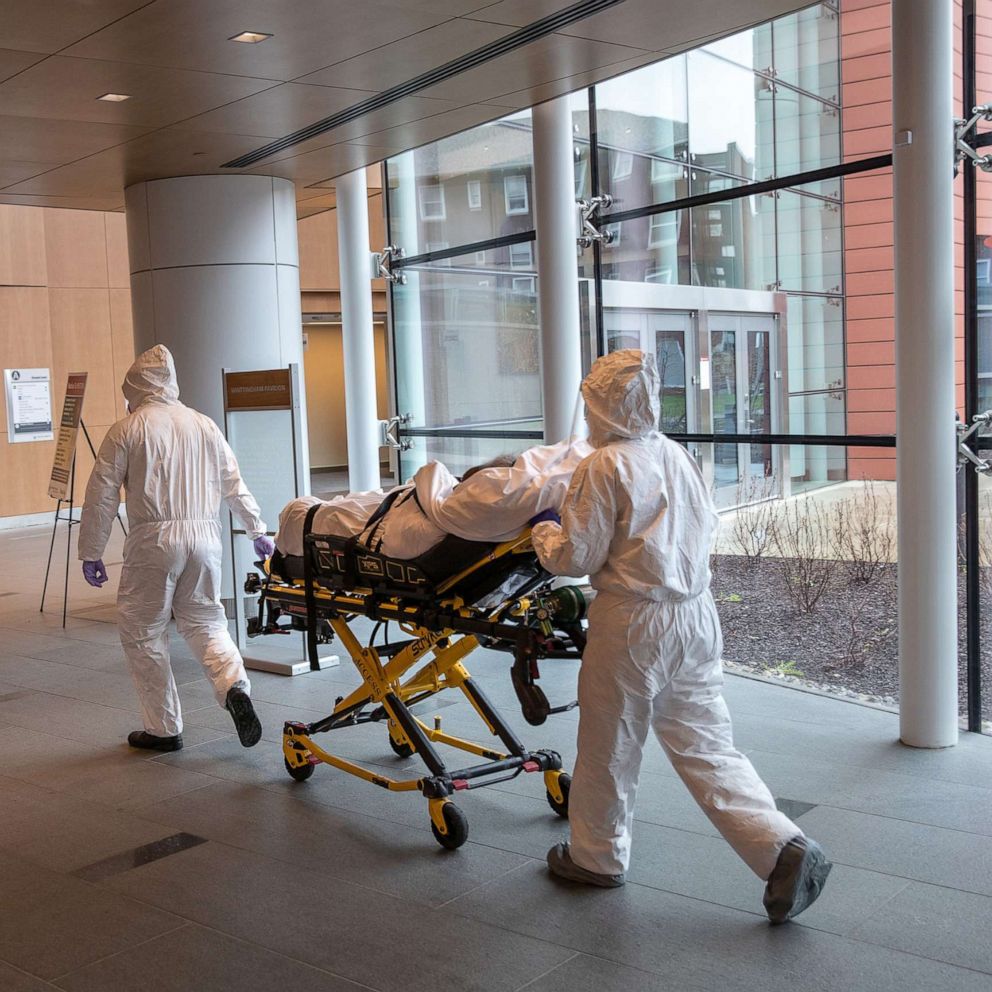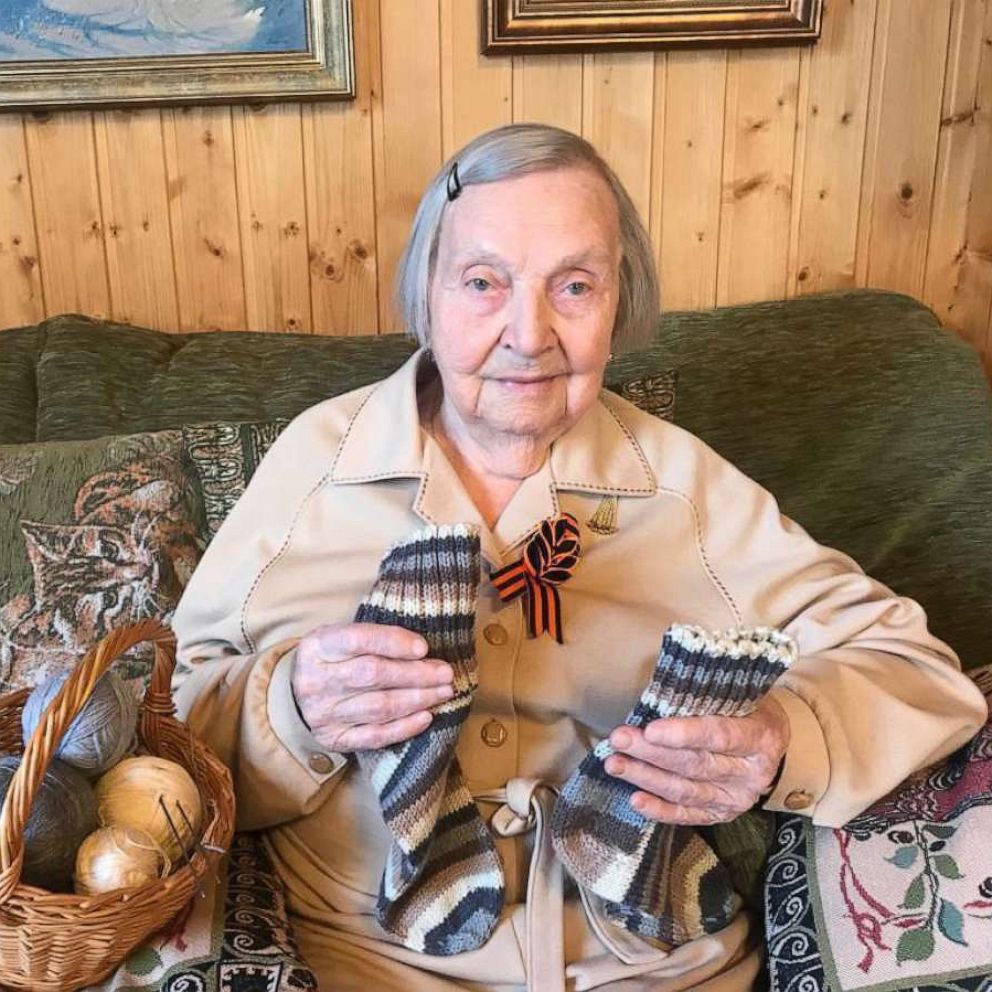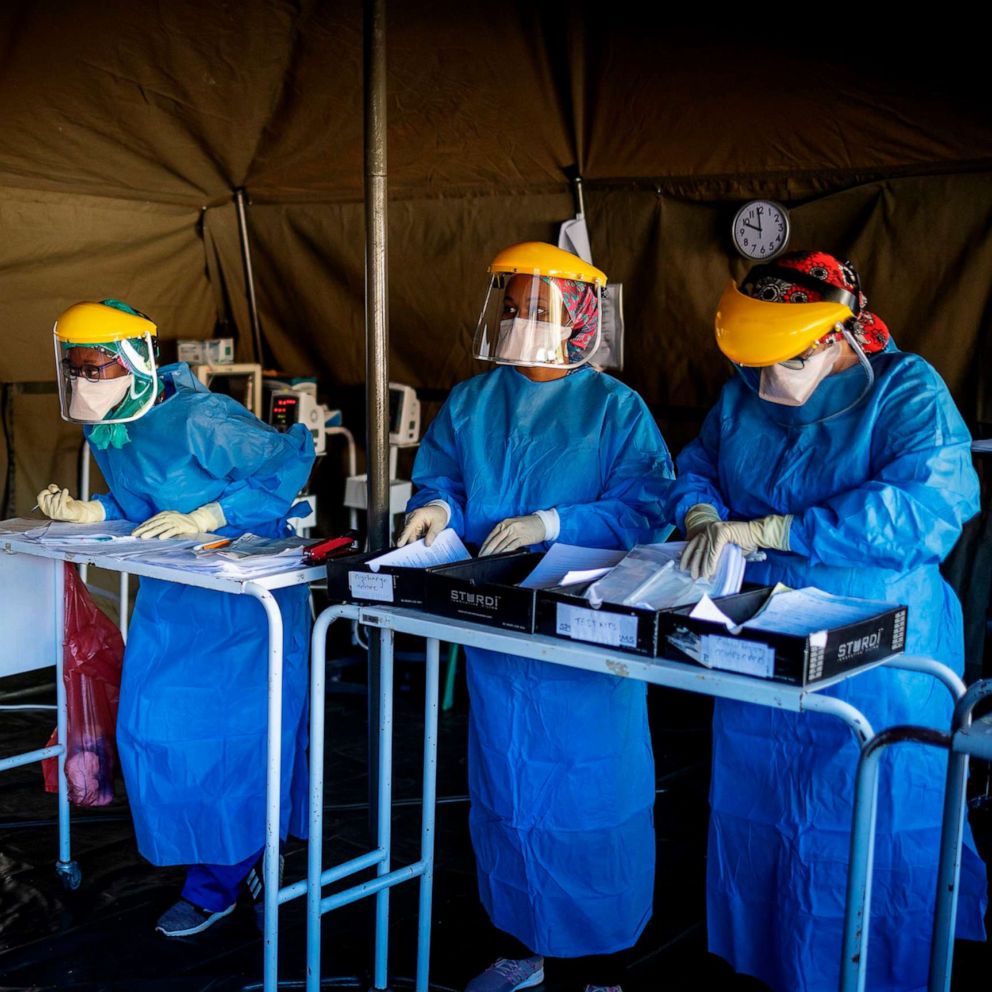Violent crime down in many big cities amid coronavirus lockdown, police say
In 18 cities, violent crime is down from last year, authorities say.
A pandemic of the novel coronavirus has now killed more than 290,000 people worldwide.
More than 4.2 million people across the globe have been diagnosed with COVID-19, the disease caused by the new respiratory virus, according to data compiled by the Center for Systems Science and Engineering at Johns Hopkins University. The actual numbers are believed to be much higher due to testing shortages, many unreported cases and suspicions that some governments are hiding the scope of their nations' outbreaks.
Since the first cases were detected in China in December, the United States has become the worst-affected country, with more than 1.3 million diagnosed cases and at least 81,805 deaths.
Today's biggest developments:
Here's how the news is developing today. All times Eastern. Please refresh this page for updates.
8:16 p.m.: Violent crime falls during lockdown
Violent crime has gone down during stay-at-home orders in more than a dozen cities, a survey of 30 U.S. police departments finds.
The study, conducted by the Police Executive Research Forum (PERF), surveyed agencies serving a mix of large and midsize cities during a 28-day period between mid-March and April.
In 18 of the 30 cities surveyed, violent crime was down slightly when compared to the same 28-day period last year, PERF found. Syracuse, New York, saw the largest drop among the cities surveyed.
Robberies declined across a majority of the departments, as did property crime, calls for service and arrests for serious crimes. Boston saw the largest drop in those arrests, down 66% from the previous year.
In more than half of the departments surveyed, burglaries also declined.
5:52 p.m.: Georgia extends some stay-at-home guidelines, relaxes others
Three weeks after allowing some businesses to reopen, Georgia Gov. Brian Kemp is extending some of the state's stay-at-home guidelines while easing some other restrictions.
The governor has issued an executive order to keep live performance venues, bars and nightclubs closed through May 31. The state's shelter-in-place provision for residents 65 and older will also remain in effect through June 12.
At the same time, the order increases the number of people allowed in a single classroom of a childcare facility from 10 to 20 people, provided a designated staff-to-child ratio is maintained.
"I am proud of these hardworking Georgians for following the guidance, keeping both their employees and customers safe," Kemp said of his aggressive reopening plans, which were first announced on April 20. "I also stand with the small business owners who decided not to reopen their doors. These men and women have a choice, and I appreciate the incredible challenges each of them faces every single day."
"Many have warned of a 'second wave' and asked if we are willing to change course if conditions decline," Kemp added. "Let me be clear: We will continue to track the numbers and continue to heed [experts'] advice. We will take whatever action is necessary to protect the lives and livelihoods of Georgians."
3:50 p.m.: California releases guidelines for reopening of more industries
California Gov. Gavin Newsom released new guidelines for the reopening of industries like offices that cannot telework, malls for curbside pickup and outdoor museums.
Before reopening, Newsom said all facilities are required to: "perform a detailed risk assessment and implement a site-specific protection plan"; apply physical distancing rules; start disinfection protocols; implement control measures and screenings; and train employees on how to limit the spread and how to screen themselves for symptoms.
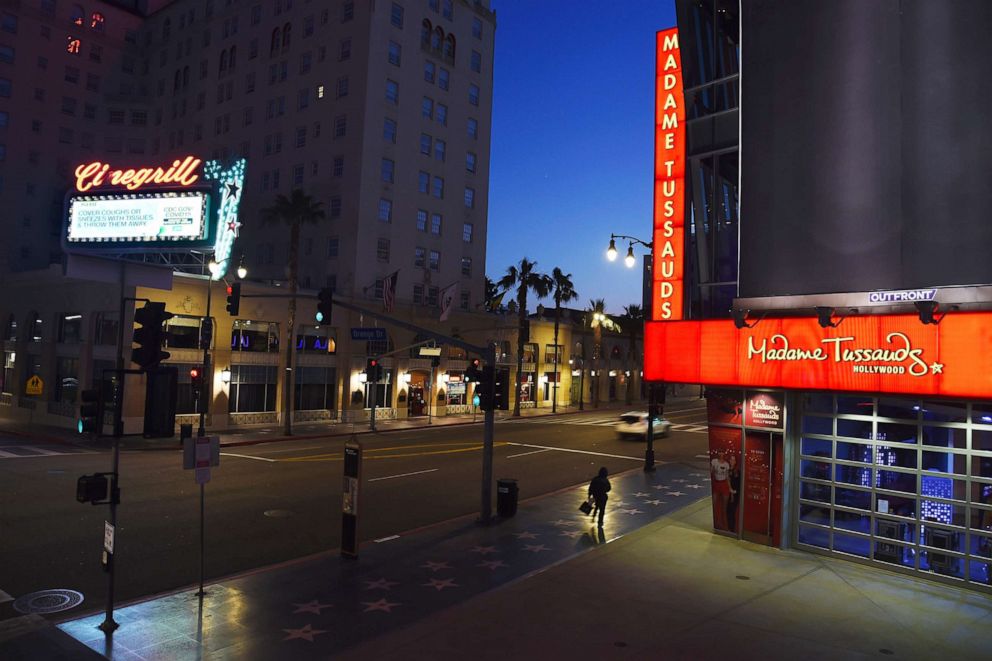
When all these steps are finished, businesses can post that checklist to show customers and employees that they're open, according to the state.
In Los Angeles County, officials are recommending another three months for the stay-at-home order, reported ABC Los Angeles station KABC. Dr. Barbara Ferrer, the county's public health director, said Tuesday that the order will be extended "with all certainty" unless there's a "dramatic change to the virus and tools at hand," KABC reported.
California has over 69,000 cases of COVID-19 and 2,847 people in the state have died.
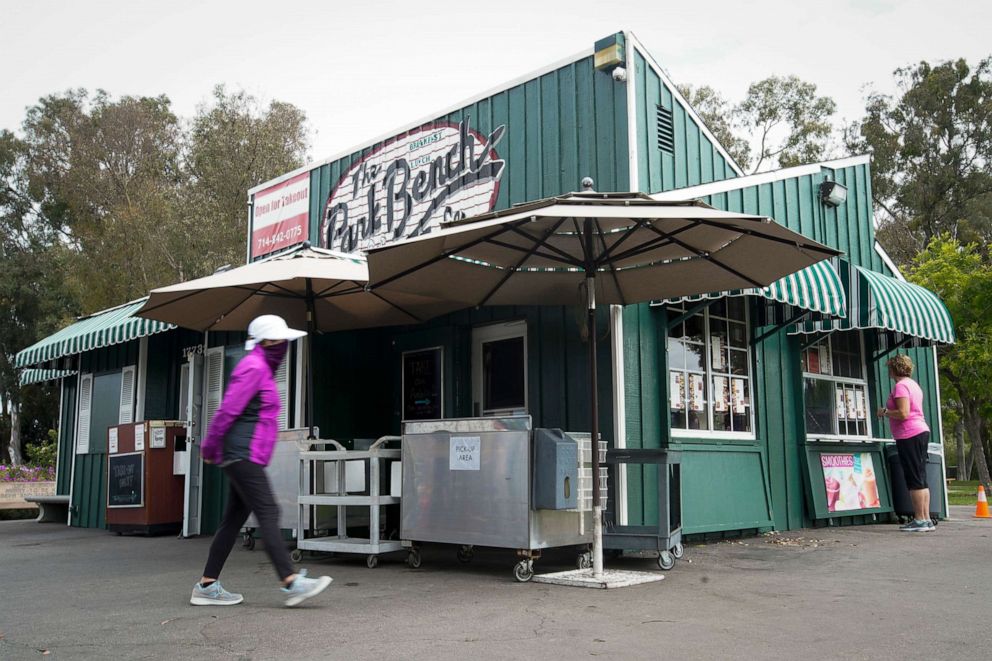
Tune into ABC at 1 p.m. ET and ABC News Live at 4 p.m. ET every weekday for special coverage of the novel coronavirus with the full ABC News team, including the latest news, context and analysis.
1:55 p.m.: Cuomo calls Pediatric Syndrome 'a truly disturbing situation'
New York state is investigating approximately 100 cases of the Pediatric Multi-System Inflammatory Syndrome associated with COVID-19, an inflammatory syndrome which has features that overlap with Kawasaki disease.
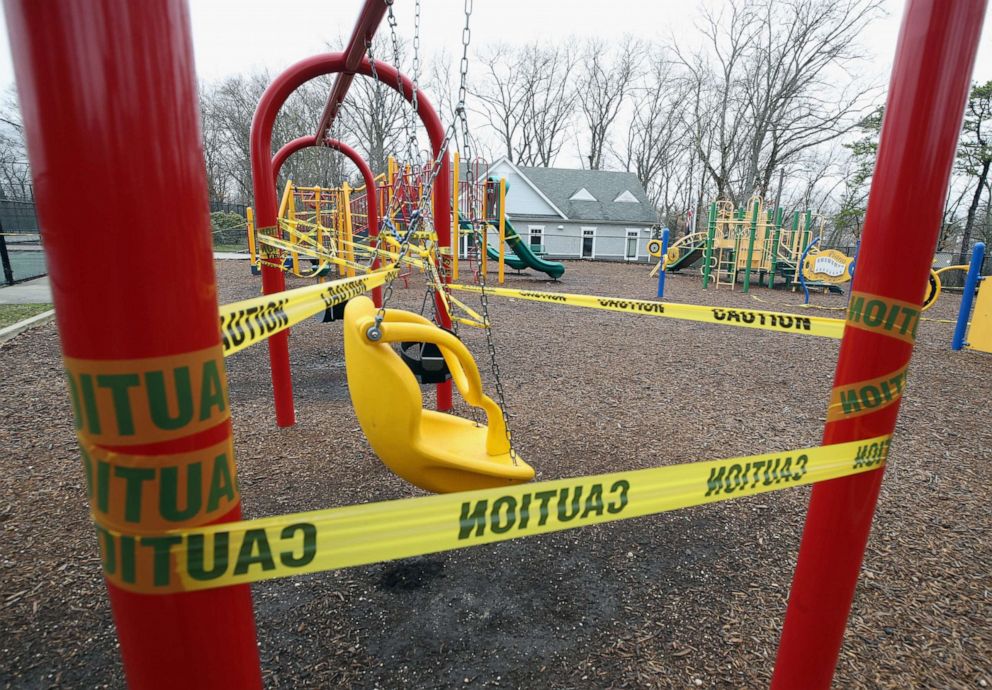
Three young people in New York state have died: a 5-year-old boy, a 7-year-old boy and an 18-year-old woman, Gov. Andrew Cuomo said Tuesday.
"This is a truly disturbing situation and I know parents around the state and around the country are very concerned," Cuomo said. "If we have this issue in New York, it's probably in other states and probably hasn't been diagnosed yet in other states because, again, these children don't present the usual COVID symptoms."
The governor urged parents to monitor their children for these symptoms:
11:55 a.m.: Broadway to stay dark through at least Sept. 6
Those with tickets to New York City Broadway shows that were scheduled through Sept. 6 can now get refunds and exchanges, the Broadway League announced Tuesday.
Broadway went dark on March 12 -- and will stay dark until further notice.
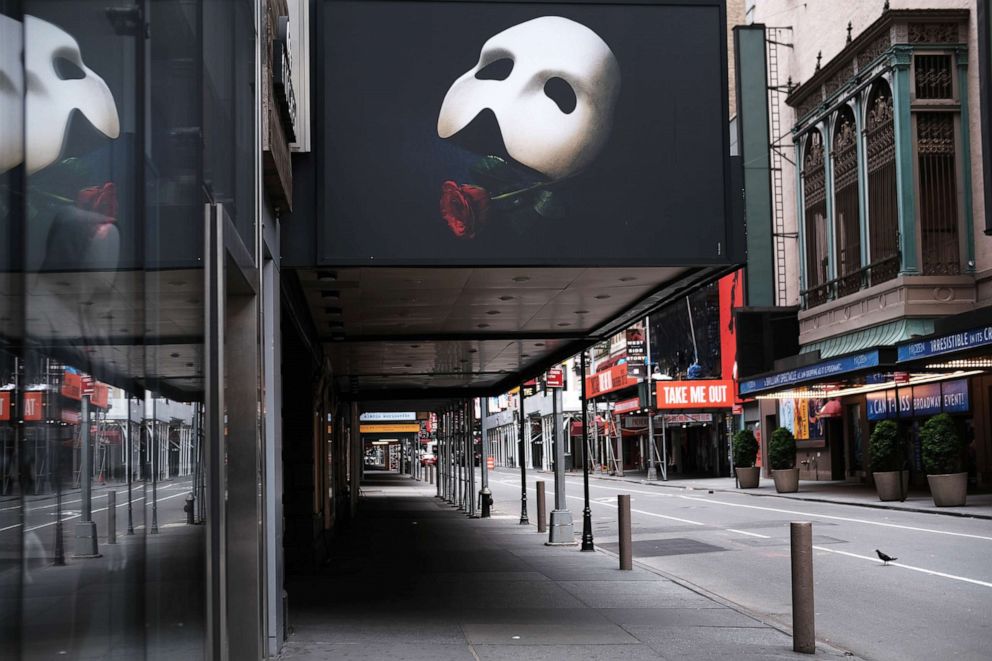
11:07 a.m.: NYC has 52 cases of Pediatric Multi-System Inflammatory Syndrome
In New York City, the latest tracking progress indicators are mixed, but show progress.
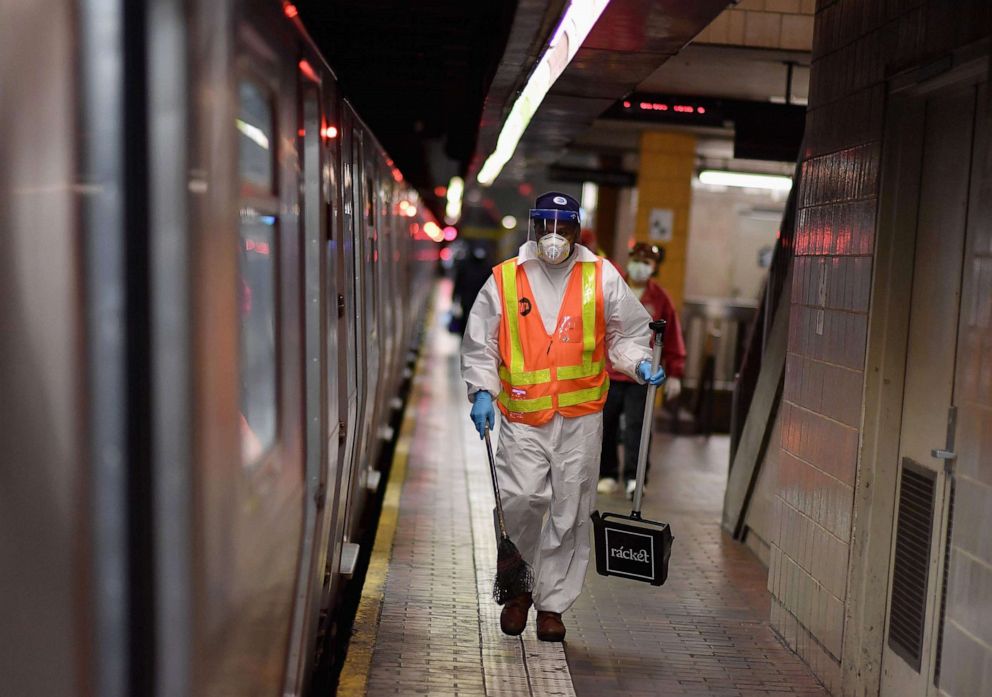
On May 10, there were 51 people admitted to New York City hospitals for suspected COVID-19 -- down from 55 admissions on May 9.
There were 550 patients in intensive care units on May 10, a slight increase from 537 patients on May 9.
And of those tested citywide, 14% were positive on May 10. Of those tested on May 9, 13% were positive.
New York City has 52 confirmed cases of the Pediatric Multi-System Inflammatory Syndrome Associated with COVID-19, an inflammatory syndrome which has features that overlap with Kawasaki disease.
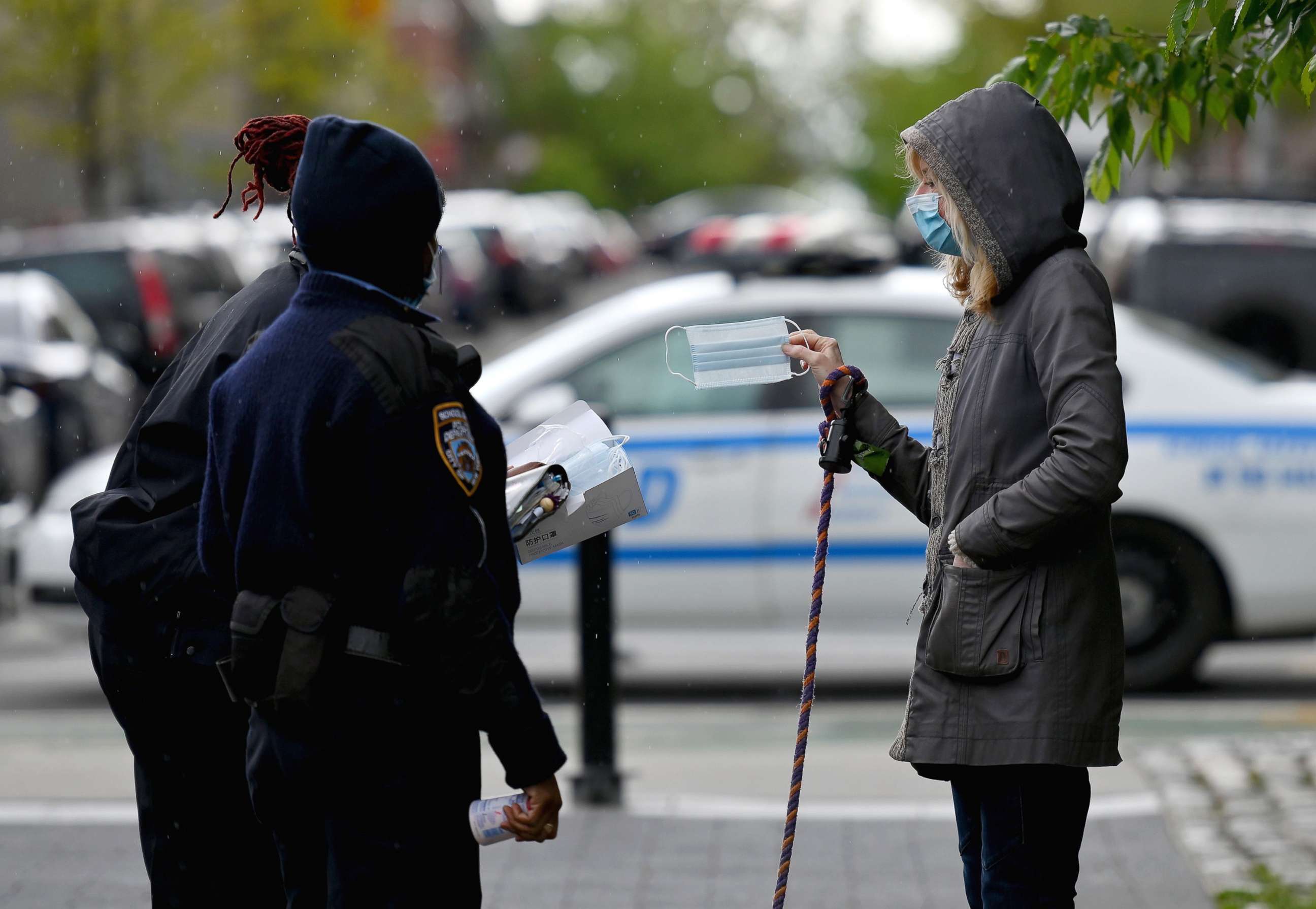
Out of the city's 52 cases, 25 tested positive for COVID-19 and 22 others had antibodies, NYC Mayor Bill de Blasio said Tuesday.
One fatality has been reported, the mayor said. Ten more cases are pending.
Howard Zucker, commissioner of the New York State Department of Health, said last week that "most children with COVID-19 only experience mild symptoms, but in some, a dangerous inflammatory syndrome can develop."
De Blasio on Tuesday urged parents to call their pediatrician immediately if their child has symptoms including persistent fever, rash, abdominal pain and vomiting.
"We want people not to hesitate here," the mayor said. "The quicker the parent reports it in ... the more chance of protecting the child."
10:45 a.m.: Buckingham Palace to remain closed to the public this summer
Buckingham Palace will not open to the public this summer due to the challenges of social distancing, The Royal Collection Trust said.

Frogmore House and Clarence House will also not open in August.
Those who booked tickets will be refunded.
10:12 a.m.: Fire kills 5 coronavirus patients on ventilators at Russian hospital
A fire that broke out in a Saint Petersburg hospital early Tuesday killed five coronavirus patients, according to Russian state media.
Four of the patients were attached to ventilators in the intensive care unit of St. George hospital when the blaze erupted, while the fifth patient was on a ventilator in a neighboring ward, state media reported. The identities of the deceased were not immediately known, and the cause of the fire is under investigation.
Preliminary reports suggested an overheated ventilator had short-circuited and caught fire.
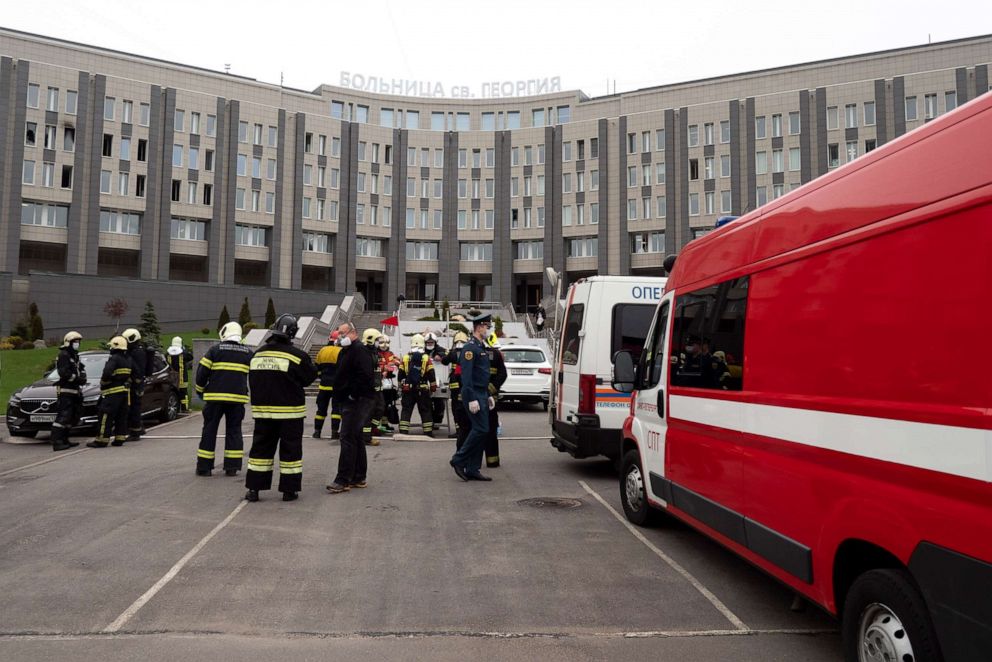
A source who worked closely with the hospital before it began treating coronavirus patients and wished to remain anonymous confirmed to ABC News what state media has reported on the incident.
A local emergency official told ABC News that firefighters quickly extinguished the blaze.
Russia's investigative committee announced it has launched a criminal investigation into the incident.
9:36 a.m.: Data shows increase in proportion of coronavirus-related deaths at British care homes
The proportion of deaths occurring in care homes in England and Wales that involved the novel coronavirus is increasing, according to a report released Tuesday by the United Kingdom's Office for National Statistics.
"In the most recent days, the proportion of deaths occurring in care homes has accounted for 40.4% of all deaths involving COVID-19," the report states.
The latest data was from deaths registered in the week ending May 1. The proportion was up from 35.7% the previous week.
"Although we expect numbers of deaths to increase as more are registered," the report states, "it currently appears that deaths per day are decreasing."
8:43 a.m.: Russian president's spokesman reportedly hospitalized for COVID-19
Russian President Vladimir Putin's spokesman Dmitry Peskov reportedly has been hospitalized after testing positive for the novel coronavirus.
"Yes, I've gotten sick. I'm being treated," Peskov was quoted as telling Russian state-run news agency RIA Novosti on Tuesday.

Peskov said he last met face-to-face with Putin a month ago and has since been communicating with him only by telephone or video call.
Russian Prime Minister Mikhail Mishustin also tested positive for the novel coronavirus last week and is still being treated for it in the hospital. Nonetheless, he chaired a cabinet meeting via video last week.
7:49 a.m.: New data shows coronavirus was in Ohio as early as January
New data shows that the novel coronavirus was present in Ohio as early as January, according to Dr. Amy Acton, director of the state's health department.
Acton revealed the new data during Monday's coronavirus briefing, explaining that antibody testing now shows at least five COVID-19 cases in five Ohio counties have a date of symptom onset in January. The earliest one dates back to Jan. 7.
Previous data showed an onset of symptoms as early as February.
The Ohio Department of Health is investigating these cases and looking to see whether they are linked to any recent travel, according to Acton.
As more antibody testing is conducted, Acton said health officials will learn more about how long the virus has been circulating in the Midwestern U.S. state. As of Monday, the state had reported a total of 24,777 cases of COVID-19 with 1,357 deaths and 4,413 hospitalizations, according to Columbus ABC affiliate WSYX.
Meanwhile, retail stories across Ohio were allowed to reopen Tuesday so long as they adhere to the state's guidelines for social distancing.
7:12 a.m.: Hair salons and restaurants to reopen across Italy next week
Bars, restaurants, beauty salons and barber shops will be allowed to reopen across Italy this month rather than having to wait till June.
Regional governors got their way on Monday when Italian Prime Minister Giuseppe Conte dropped his plan to keep restaurants and hair salons closed until June 1 and instead moved up their reopening to May 18. A list of coronavirus-related safety precautions for those businesses will be issued later this week.
While some Italian provinces move ahead with reopening businesses earlier than originally planned by the central government, Conte still has the power to overrule policy decisions made by governors if the number of COVID-19 cases start to climb again. Monday marked the first day that Italy's nationwide total of patients in intensive care units fell to under 1,000.
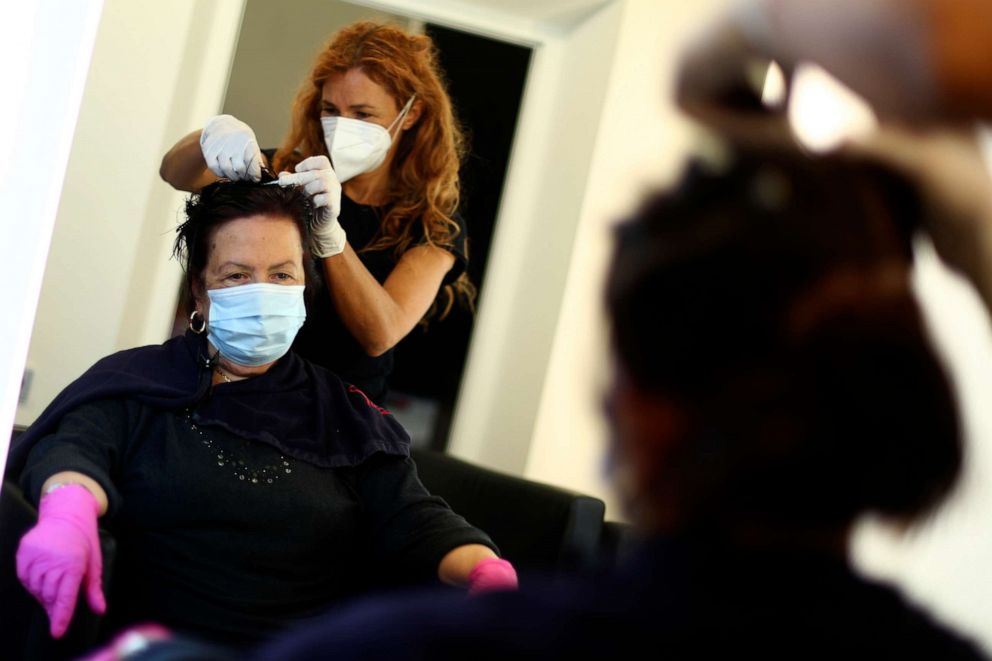
Once the hardest-hit country in Europe, Italy was the first nation in the world to impose a nationwide lockdown due to the coronavirus pandemic. Last week, Italy began to slowly lift the strict lockdown by easing some restrictions.
Italy's Civil Protection Agency recorded the country's lowest daily death toll from COVID-19 on Sunday. The single-day rise of new infections also fell below 1,000 for the first time since early March.
Italy is one of the worst-affection nations in the world in the pandemic, with more than 219,000 diagnosed cases of COVID-19 and at least 30,739 deaths.
6:35 a.m.: Russia reports over 10,000 new cases for 10th straight day
Russia reported more than 10,000 new cases of COVID-19 on Tuesday for the 10th day in a row, as the country emerges as a new hot spot in the coronavirus pandemic.
There were 10,899 new cases and 107 new deaths confirmed in Russia over the past 24 hours, according to the country's coronavirus response headquarters.
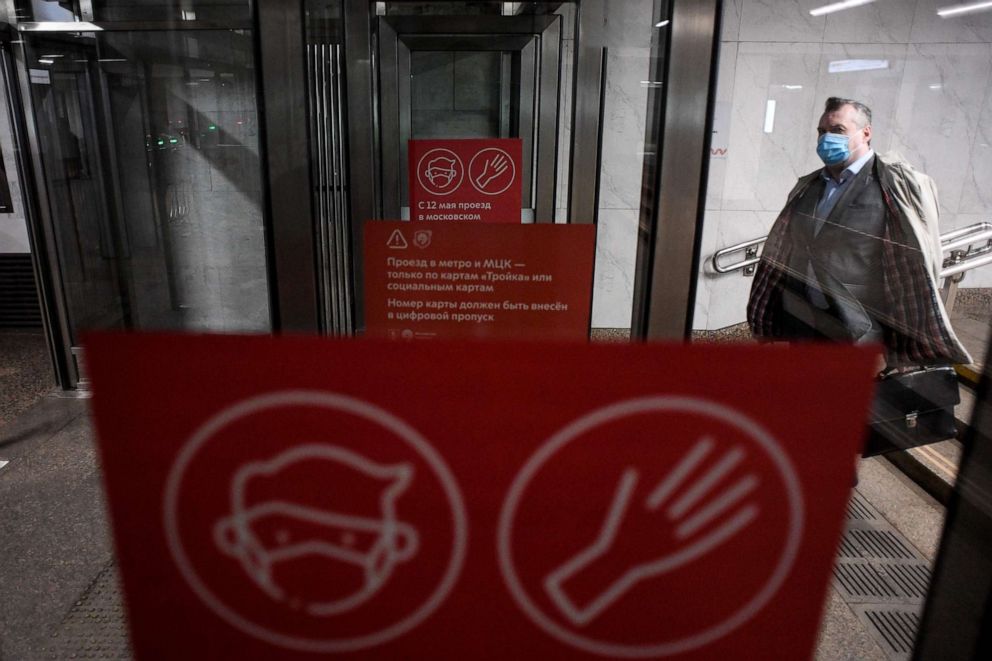
The latest daily tally is down from Monday's record of 11,656 new infections.
So far, Russia has reported a total of 232,243 confirmed cases of COVID-19, making it the second-largest national tally in the world, behind the United States. Russia also has one of the world's fastest rates of new infections in the coronavirus pandemic, second only to the U.S.
5:10 a.m.: Seoul works to trace clubgoers linked to cluster of new cases
The Seoul metropolitan government is ramping up its efforts to trace clubgoers at risk of contracting the novel coronavirus.
A police task force team of over 8,500 members are combing through mobile phone records, credit card bills and even surveillance footage to identify individuals who recently visited reopened clubs and bars in the popular nightlife district of Itaewon, after 21 new cases of COVID-19 linked to the area were confirmed on Tuesday.
So far, South Korea's Centers for Disease Control and Prevention has counted a total of 102 confirmed cases tied to individuals who were at Itaewon bars or nightclubs that reopened after anti-virus measures were relaxed or who had come in contact with those who were. Authorities have since shut down more than 2,100 nightclubs, hostess bars and discos in the South Korean capital.
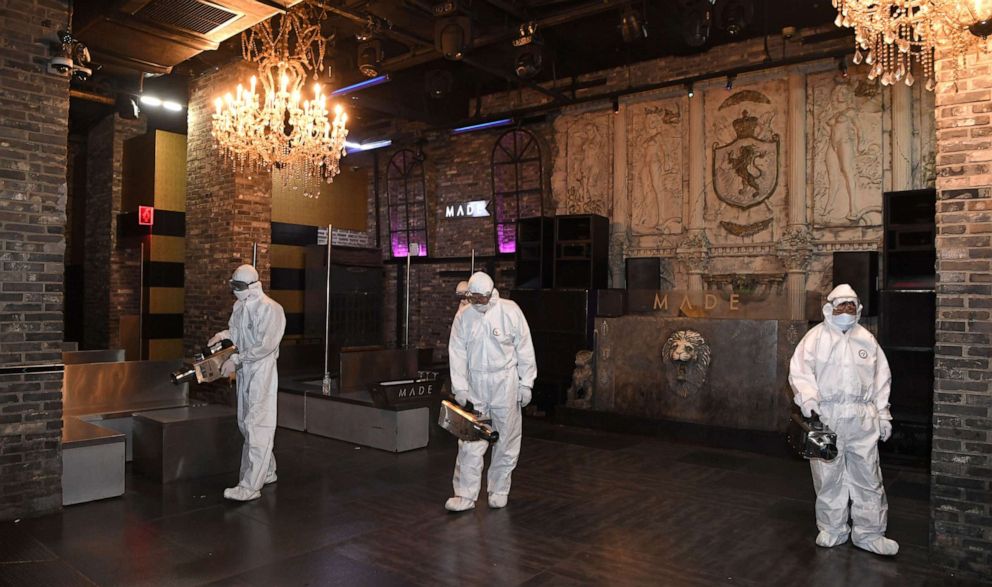
Seoul police have secured a list from mobile operators of 10,905 customers who were present in the Itaewon area for over 30 minutes between April 24 and May 6 and sent text messages asking the owners of those mobile phones to get tested for COVID-19. Police also tracked the credit card transactions of 494 people out of about 1,000 who paid tabs at the clubs and bars currently under investigation there.
"Messages have already been sent to everyone and will be sent once more this afternoon," Seoul Mayor Park Won-soon said in a press briefing Tuesday. "Those who have received the messages should visit the nearby health center or screening clinic soon for the testing."
Some 10,300 people tied to the Itaewon area have been tested for COVID-19 so far. Many of the individuals are in their 20s and 30s.
South Korea has begun to gradually ease its strict social-distancing measures that were put in place to curb the spread of the virus. Last week, people resumed their daily routines while museums, libraries and other public facilities reopened under the relaxed rules. The number of new cases reported in the country have stayed low for weeks, but the sudden spike among the younger generation has raised concerns that the quarantine measures may have been lifted too soon.
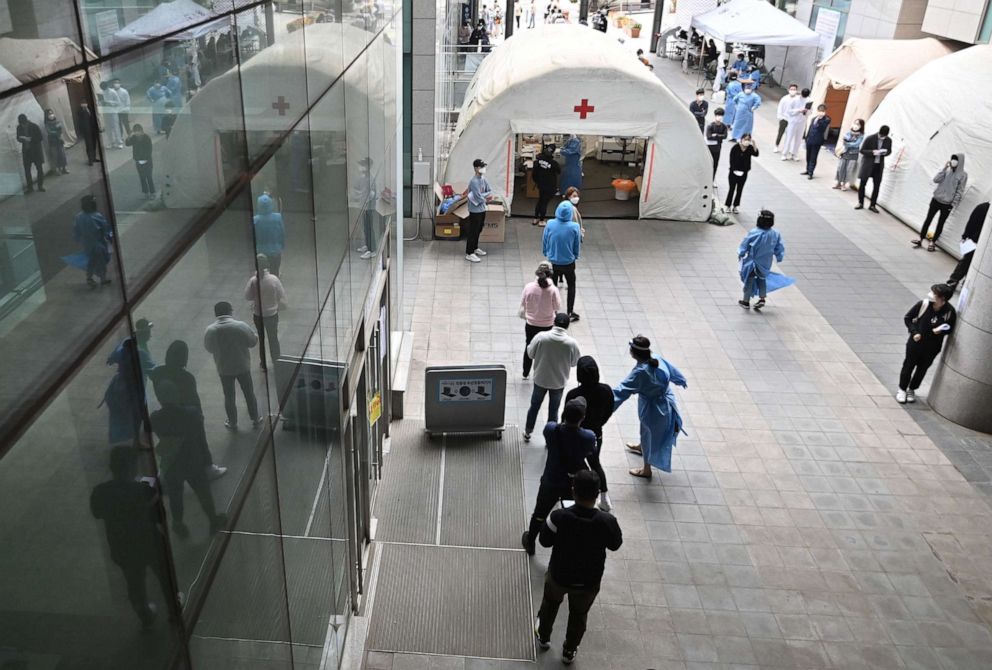
City health authorities have said that all testing will be free for those who come forward and no questions will be asked. But a number of clubgoers are still reluctant to get tested for fear of being stigmatized, as the Itaewon area caters to a large LGBT community.
"This is not a matter of being gay or not. This is a problem that arose unexpectedly to all young people," David Kim, an LGBT activist at the Sinnaneun Center in Seoul, told ABC News. "No one expected an outbreak. Even the government said it's OK to reopen the clubs after a two month break. It's just sad that we are being targeted by conservative media and social opinions as if we are the villains."
South Korea once had the largest outbreak outside China, where the novel coronavirus first emerged, but the country quickly implemented an extensive "trace, test and treat" strategy. A total of 10,936 people across the nation have been diagnosed with COVID-19, of which 9,670 have recovered and 258 have died, according to South Korea's Centers for Disease Control and Prevention.
What to know about coronavirus:
- How it started and how to protect yourself: Coronavirus explained
- What to do if you have symptoms: Coronavirus symptoms
- Tracking the spread in the U.S. and worldwide: Coronavirus map
4:34 a.m.: Wuhan to test entire population after cluster of cases emerge
Wuhan, the Chinese city that was ground zero of the coronavirus pandemic, plans to test its entire population for the novel coronavirus after a cluster of new cases emerged.
The Wuhan Municipal Health Commission issued an emergency notice on Monday announcing a "10 Day Battle" to ramp up its ability to conduct nucleic acid tests on the city's 11 million residents. Each district must submit a detailed plan by Tuesday on how they will test their respective communities, according to an official leaflet which has been circulated on social media and carried by state-run media.
The document did not state a timeline for the completion of the testing drive itself.
Wuhan, the capital of central China's Hubei province, reported its first cluster of coronavirus infections on Monday in over a month, stoking fears of a second wave. The five new locally transmitted cases arose from a previously asymptomatic patient who then spread the virus to four others in their residential compound, according to the official state-run Xinhua News Agency.
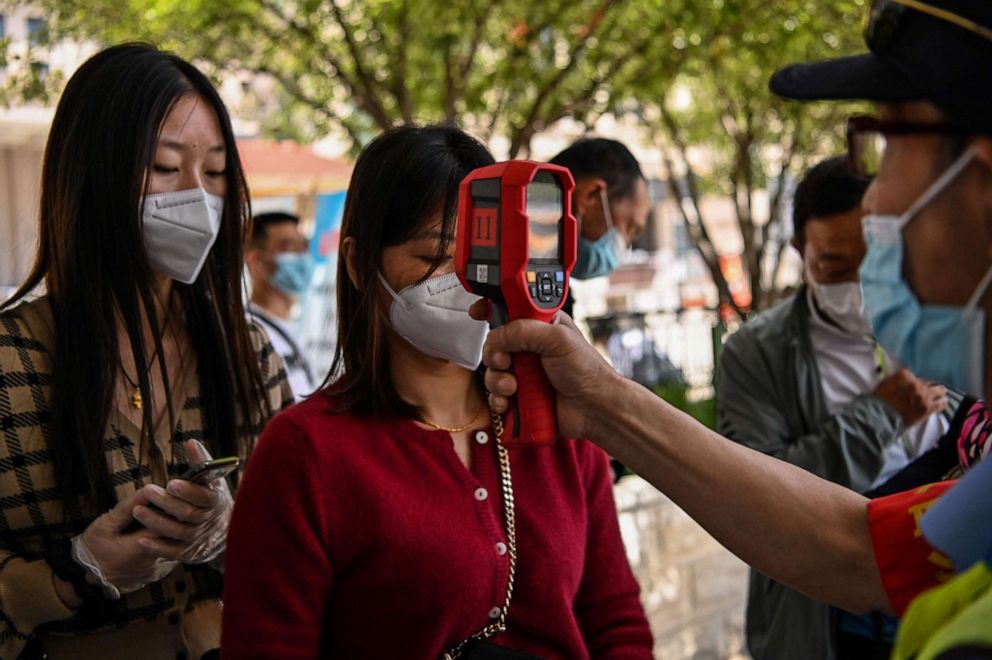
China's National Health Commission said Tuesday morning that no new cases had been reported in Hubei province over the past 24 hours.
Wuhan was the first city in the world to go under a coronavirus-related lockdown after the newly identified virus was thought to have first emerged there in December. The lockdown was lifted last month and life in the city has slowly been returning to normal. Last week, Chinese authorities decided to downgrade the entire country from high- to low-risk for the novel coronavirus as the number of new infections continued to hover just above zero and no new deaths had been reported for several consecutive days.
But Wuhan's Dongxihu district raised its risk level from low to medium after a new locally-transmitted case was confirmed there over the weekend, according to Xinhua News Agency.
Since the start of the pandemic, the Chinese mainland has reported 82,919 confirmed cases of COVID-19 and 4,633 deaths. There are still 115 people with the disease in hospitals, according to the National Health Commission.
3:30 a.m.: Trump and Pence to maintain distance from each other
U.S. President Donald Trump and Vice President Mike Pence will maintain a physical distance from each other in the immediate future, a senior administration official told ABC News.
The decision was made in consultation with the medical unit at the White House, the official said. The change comes after two aides on the White House campus, including Pence's press secretary, tested positive for the novel coronavirus.
Sources had told ABC News earlier that there were discussions over the weekend about keeping the president and vice president separated, but no decision on that had been made until now. It's unlikely the two will be attending meetings together unless necessary, sources said.
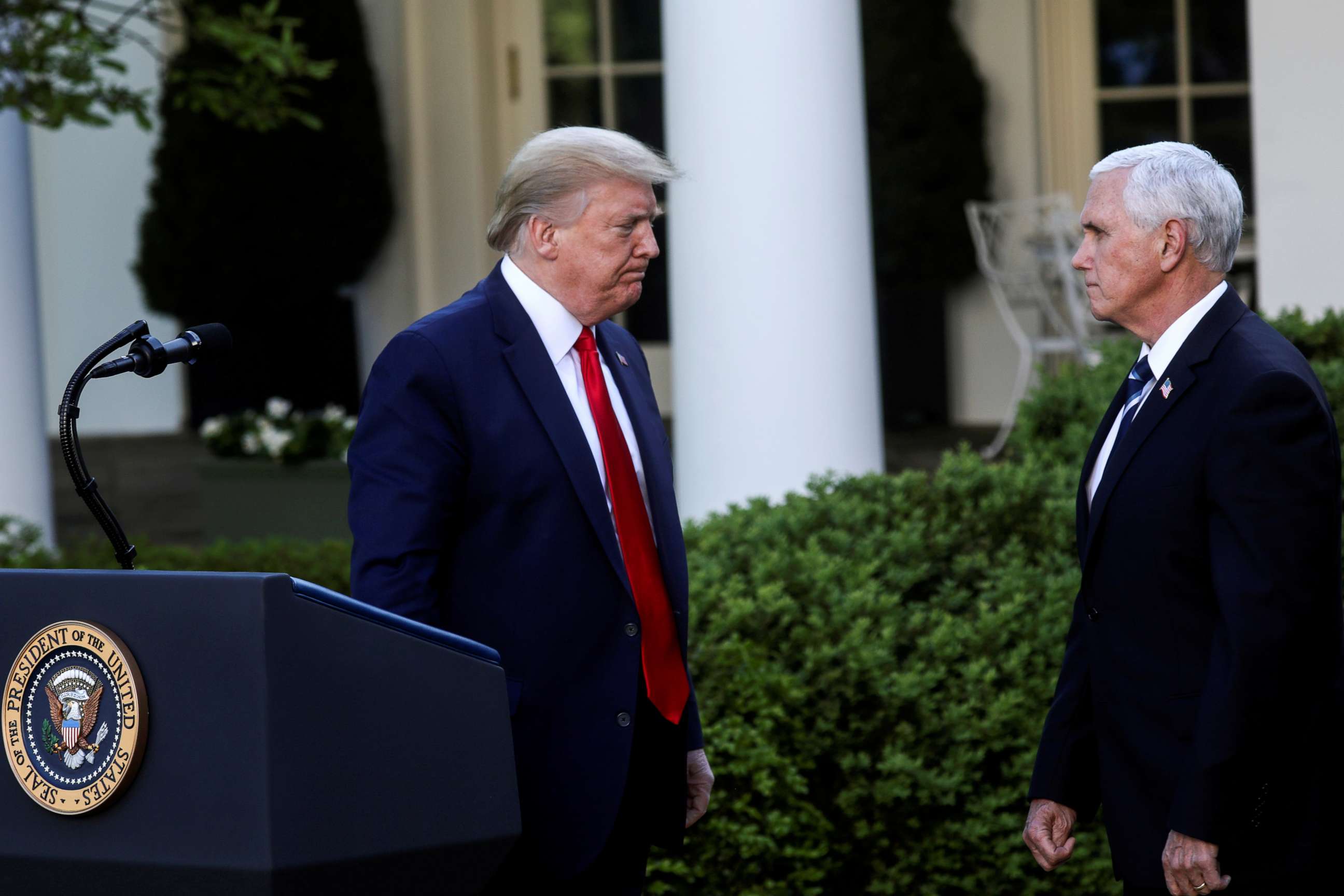
Pence spent all of Monday at the Eisenhower Executive Office Building, where he maintains his ceremonial office and where most of his staff have offices, a senior administration official told ABC News.
The Eisenhower Executive Office Building is part of the White House campus and situated adjacent to the White House building itself. Pence did not go to the White House at all on Monday, the official said.
While in the Eisenhower Executive Office Building, Pence followed the guidelines for critical infrastructure workers laid out by the U.S. Centers for Disease Control and Prevention, the official told ABC News. The vice president qualifies as a critical infrastructure worker because he's a key member of a government entity that works to provide public health access, among other critical functions, according to the official.
Those guidelines call for people to take their temperature before going into work, monitor for any symptoms, wear a mask at all times in the workplace for 14 days after last exposure to an infected individual, maintain a six-foot distance from others and practice social distancing at work as much as possible, as well as disinfect and clean workspaces regularly.
Pence followed those guidelines as much as possible and wore a mask inside the Eisenhower Executive Office Building on Monday, the official told ABC News.
ABC News' Luke Barr, Joohee Cho, Katherine Faulders, Ben Gittleson, Dragana Jovanovic, Aaron Katersky, Alina Lobzina, Zoe Magee, Phoebe Natanson, Patrick Reevell and Karson Yiu contributed to this report.
